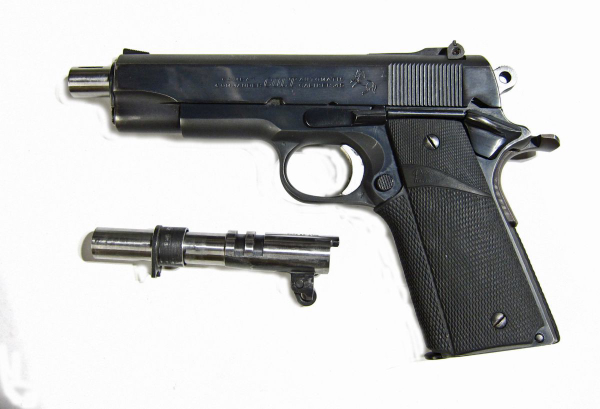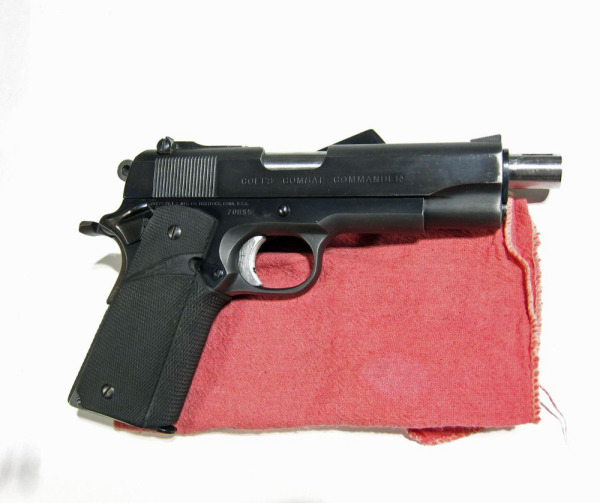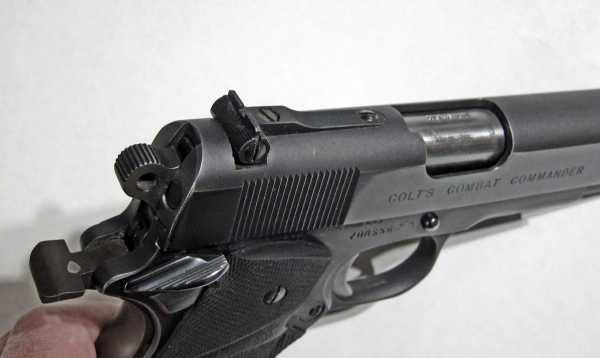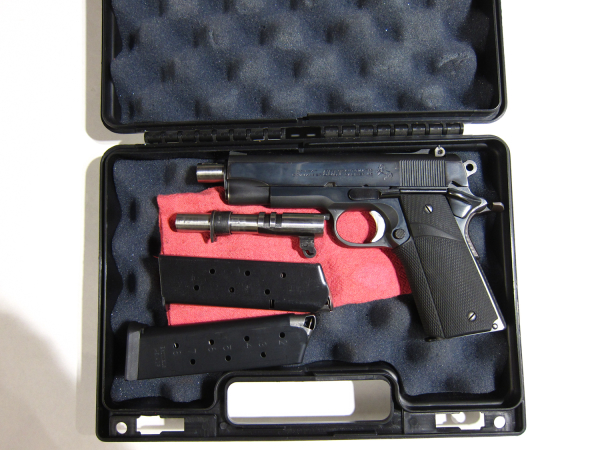Back in the old, old days, I was on the prowl for the “ideal handgun” for uniform duty and for concealment as needed. In those days, the close of the 1970s into the early 1980s, the service handgun landscape was barren compared to the fruitful scene today.
Looking back, it was going to be a fruitless exercise; what is ‘ideal?’
As I was in an agency that allowed “carry it if you can qualify with it,” I figured the best play was a less-than-Government Model size pistol in its traditional caliber. Before people start telling me how great 9mm is, consider the environment: jacketed hollow point ammunition was in its comparative infancy. They were all cup-and-core bullets. Variations in the hardness of the core and the thickness of the jacket made a difference.
We hadn’t had the FBI-Miami disaster yet, so we didn’t know that “proper jelly,” properly attired and covered, was the supreme arbiter of whether you’d survive a fight.
Consider the other side of the equation: the 45 ACP – like the 38 Special – was the veteran not just of wars, but a veteran of ammunition development. Like the 38 Special, the 45 ACP (as the US service caliber) had to compete in national matches.

Round-for-round, 45 Auto was some of the most accurate ammunition available. It was a little tough to find sloppy shooting 45 ammo (the 38 had a few offerings that were problematic).
Accuracy – and the ergonomics of the handgun – made the difference for me.
I’d read a piece by Massad Ayoob about the steel-framed Colt Commander; a better-balanced gun than the Government Model, he said it had – as I recall it – less recoil effect due to the lessened slide mass running back and forth. That’s not what he says now – and that’s my experience too – so I believe it was the superior balance of the shorter slide/barrel with the full size frame that made it feel better to shoot.
He liked them for pin shooting games – Second Chance in those days. He used a Combat Commander to which he had fitted a Government-length barrel and a modified barrel bushing – the work done by John G. Lawson of Tacoma, Washington.
I found a used 1977 vintage Colt Combat Commander at Bud Prauser’s shop in Southeast Kansas.

I contacted Mr. Lawson. He said to ship the gun with a full-length barrel and bushing – necessary for fitting to the short slide. He preferred to fit J-frame S&W adjustable sights on Colt autos to the K-frame variety of sights. This caused me some concern as few J-frame revolver models had adjustable sights.
While perusing the catalog of Gil Hebard Guns, now gone into the mists of history, I found the Colt barrel and bushing and, remarkably, the sights. As the burr hammer of the Commander was eating a hole in my hand, I also ordered the Colt-branded spaded grip safety and a Colt-branded bilateral safety lever. (I shot quite a bit left-handed, finding it a better way to shoot ‘wrong side’ cover positions.)
I installed the safeties – they dropped in – and added my favorite Pachmayr stocks and flat mainspring housing. Soon I got the green light to send the gun. I did and waited anxiously.
Then Mt. Saint Helens happened, May 18, 1980. That’s too close to Tacoma, Washington.
Fearing the worst, I was nervous waiting for the gun’s return trip. The gun made it.

John had fitted the Government barrel and bushing – he had the knack for making them work in the Commander slide, along with the S&W J-frame rear sight. He fabricated a front sight and regulated it to the two bullet weights the aluminum blocks he also sent along would cast. Loading data was offered – and now long lost to history.
The gun is fitted with a short trigger which has a trigger stop installed.
I found I liked shooting the gun better with the factory fitted short barrel. It was as reliable as the magazines of the era allowed and seemed to shoot better than I could hold. The longer barrel seemed to have a bit of a ‘hitch’ when going back into battery, but it ran well.
Colt began production of the Combat Commander, the Commander pistol with a steel frame, in 1970. The “Lightweight” designation was added to the alloy Commander and the name has continued into present production. Steel Commanders are no longer “Combat,” but simply Commanders.

If memory serves, Mas’ gun had K-frame adjustable sights fitted to the slide in the dovetail, slightly lessening the sight radius. I confess I didn’t like the look, preferring the sights all the way to the back of the slide like a bullseye shooter. Like most duffers, I thought sight radius made a huge difference.
Some of my best shooting has been done with small frame snub revolvers and smaller autoloaders, so I guess that excuse is out for me. Lawson’s installation put my J-rear sight in the same location.
Later, when Lawson Commander returned, I took it to my attorney’s office so he could admire it. A brother officer came into the office. He saw it and was interested. He took the Commander to hand.
Ruefully, he hefted the pistol and said, “It feels like the handshake of an old friend.”
John Lawson passed away in November 2016. I still have the gun he built for me for a short time. His efforts on my behalf haven’t been forgotten.
-- Rich Grassi